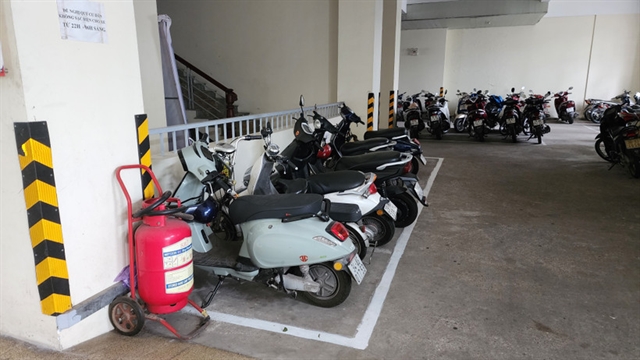 Economy
Economy

 |
| Đắk Lắk durian is stamped, ready for export. — VNA/VNS Photo |
HÀ NỘI — Việt Nam could earn US$300 million from shipping frozen durian to China on the back of a recently signed protocol on plant quarantine requirements.
The protocol is huge for the Vietnamese durian industry, promising a breakthrough in the export turnover of this fruit in the near future, according to Huỳnh Tấn Đạt, Director of the Plant Protection Department under the Ministry of Agriculture and Rural Development.
Durian can be exported by land, air and sea.
Although frozen durian products boast huge export potential, enterprises face some major challenges in food safety requirements, packaging, origin traceability and food safety and hygiene processes.
Enterprises need to improve their freezing technology, product quality control and traceability systems, as well as controls on the production process of frozen durian.
Đạt ordered agencies of the department to continue providing technical support and training for localities, associations, cultivation areas, packaging facilities and exporters, while working closely with the General Administration of Customs of China (GACC) to settle issues in a timely manner.
The Department of Agriculture and Rural Development must work to raise public awareness of China’s regulations on frozen durian imports, while localities must step up inspections to promptly detect any violation of plant protection and food safety regulations in production and packaging.
Meanwhile exporters, packaging facilities and producers must meticulously study China’s regulations, and strictly comply with the requirements under the protocol. They must also develop substantive chains that link growing areas, packaging facilities and exporters, as well as build a traceability system, he added.
Việt Nam’s frozen durian products set for export to China include whole durian, mashed durian and durian flesh, according to Nguyễn Quang Hiếu, deputy director of the Plant Protection Department.
Durian is frozen at a temperature of -35°C or lower for at least one hour until the core temperature reaches -18°C or lower. This temperature is maintained throughout the storage and transport process in accordance with the Code of Practice for the Processing and Handling of Quick Frozen Foods.
Frozen durian exported from Việt Nam to China must comply with China's laws and standards related to food safety and plant quarantine, Hiếu noted.
Products ready for export must be selected to remove rotten and damaged fruit and to ensure that they do not contain impurities, he said.
Frozen durian exports must originate from durian orchards that are registered, managed and supervised.
Facilities for producing, processing and preserving the products must be registered with Chinese customs.
Packaging materials for the frozen fruit must be clean, hygienic, unused and comply with food safety and hygiene and plant quarantine requirements.
Each box must be labelled in Chinese or English with the product name, origin, name and registration code of the production or processing facility, name and address of the exporter, production date, expiry date and the sentence "This product is being exported to the People's Republic of China", Hiếu said.
Last year, China spent some $6.7 billion importing fresh durian and $1 billion purchasing frozen durian from Thailand and Malaysia.
Việt Nam now has around 150,000 hectares of durian, with growers able to harvest the tropical fruit all year round. The country holds a competitive edge over its regional rivals regarding the costs of logistics. This year, Việt Nam’s durian exports may surpass $3 billion. — VNS




